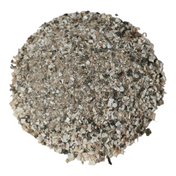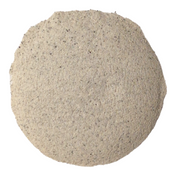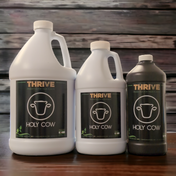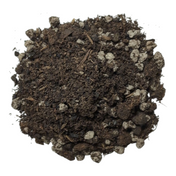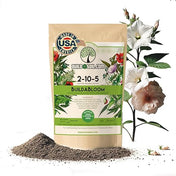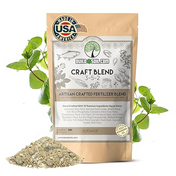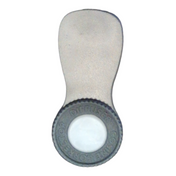I don't believe in coincidence and lately I've been asked by several different growers the same question. I've already discussed this personally with a few of them but I figured that others might be wondering as well.
"What should I top dress my plants with to ensure that the soil has enough food and everything will continue to cycle properly? Furthermore, how do I make sure I'm not losing out on any yield?"
This is multi-pronged question but I'll do my best to answer it and you can also see the email that I wrote below as a personal response to a customer.
#1. Mulching is huge, keeping the top few inches of soil moist and alive will keep this whole system we designed into a powerful plant growing machine. This layer between the mulch and the soil will house many forms of life and also allow the plants' rizosphere to really take off and stay active in the top layer of the soil. In my opinion, mulch also eliminates over-watering just to keep the top moist. I know many growers will constantly moisten the top of the soil while the lights are constantly drying it out.... it's like a never ending battle until the canopy is full.
How important is mulch? I'll let you decide.
#2. If your soil is mixed up with all the right stuff this, may not even be necessary. One of the challenges I have with most organic growers is the constant desire to add more stuff and more nutrients as a leftover habit from all the years using nutrient grow bottles. (If you feel this way, you aren't alone... I deal with it too.) If you can't kick the habit, this top dress regimen shouldn't hurt anything and will at least give you some peace of mind. If your soil does need a little help, this will do the trick. I tend to notice that these top dresses are more necessary in smaller soil containers. The biology of a small 5 gallon container has to be constantly working at maximum potential to keep up with a fast growing plant. That pressure is eased in larger volumes of soil, so take that into consideration. Keep in mind, once your soil ages, it just keeps getting better and you won't have to do any of this.
Here is the email that I sent to one client:
Great question. I'm in the process of designing a few packages for that purpose. I would use this while vegging a couple weeks before going into flower.
There are many ways to approach top dressing a plant but here is a method that I really like.
For every 5 Gallons the plant is in I would add the following:
1. 1 Tablespoons Kelp Meal
2. 2 Tablespoons Fish Bone Meal
3. 4 Tablespoons Gypsum
4. Cover with up to 1/2" - 1" layer of worm castings across the whole container.
5. Put the mulch back, or cover with fresh mulch etc.
This mixture is designed this way for a few reasons.
Kelp Meal:
Fish Bone Meal:
Fish Meal contains phosphorus which is easily accessed in a living soil that has been aged and given time to develop a fungal network. Newly mixed Living Organic Soils will require a little help in this department and this is one of the reasons that brand new soil growers might not experience the yields they are looking for. I don't think fish bone is magic or anything, it's just the least worst phosphorous amendment and many would use Soft Rock Phosphate or regular Bone Meal from the cattle industry. Fish bone meal does have a little bit of salt so we don't want to overdo this.
Gypsum:
Gypsum is added for a couple of reasons. Gypsum is also called Calcium Sulfate. That means there is calcium and sulfur in the gypsum and both are very important. Calcium I feel can be added with other ingredients.... but Gypsum brings sulfur with it which is why it's not liming and won't mess with the ph. The sulfur will combine with whatever the excess cations are and help carry them out of the soil. The sulfur will also combine with the Phosphorous in the Fish Bone Meal and allow a much larger amount to be used by the plant in a shorter time period after transplant than without the gypsum. (Note: ph is irrelevant while growing in a long term living organic soil but it does help to understand what you are doing with a brand new soil mix.)
Once this top dress has been applied then we top that off with as much worm castings as we can afford to use. (I usually use a 1/2 inch to 1 inch layer but you can use up to 2 inches across the whole container) This will ensure a ton of biology is available right on top of the fresh amendments that we just applied.
Hopefully you already have all this stuff, but you could easily add a little bit of Neem for pest control. The worm castings should kill any gnats or anything when you apply the full top dress. So the Neem is not 100% needed if you don't have any.
Cover all that with mulch!
I hope this blog posts assists some of you out there as you are growing. Let me know if you have any questions.
NOTICE: I use mixes similar to this, but these ratios were designed on paper and not thoroughly tested in these exact proportions, please add more or less as you feel best fit. Just understand the reason with which we added each ingredient to the recommendation list above.
Check out our topdress product pre-made and ready to use called BuildAFlower
https://buildasoil.com/products/buildaflower-top-dress-kit
and flowering feed just in case: https://buildasoil.com/products/buildabloom
Sentence linked above to this website: http://journeytoforever.org/farm_library/seaweed.html

